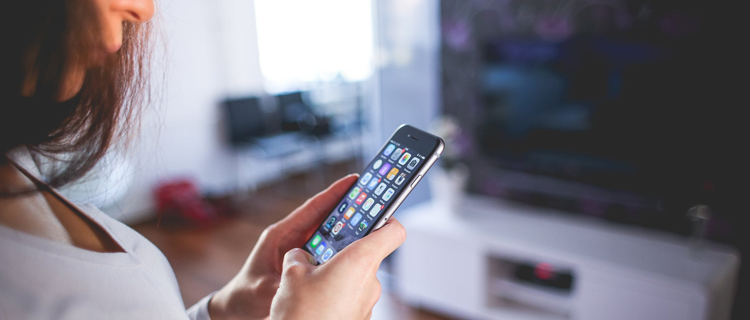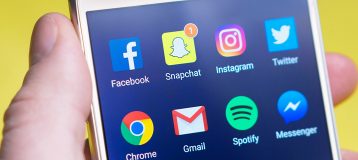Over the last 18 months brands, music artists, and general service providers around the world have been experimenting with Chatbots. They were touted as the next big thing in the mobile landscape, and so lots of people have jumped onto the Bot bandwagon, and jumped hastily I would say. Part of my job is to research the Bot landscape and so I’ve had the fun job of interacting with many different types of Bots. When I started out, I had high hopes of finding lots of smart, entertaining and useful bots, but sadly, that has not been the case; reality is, there are a lot of “bad robots” out there (nothing to do with J. J. Abrams’s company)
If you want to see what I’m talking about, just go to the Discover section of Facebook Messenger and you’ll see what I mean. You’ll quickly find yourself in short, rather pointless chats that seem to go around in a (rather small) loop. In contract, my experience of Bots within native apps has been much better. Maybe it’s because the Bot is less isolated from the rest of the brand’s offerings, but I suspect that is it largely because those Bots seem to have been much better “thought out”.
In my opinion, it is the “thought out” part that is the key differentiator between good and bad, between genuinely useful and just silly, between helpful and simply pointless Bots.
So over the next few minutes, I want to share with you what I believe to be the next 3 key considerations that need to be thought out if you are serious about building a genuinely good Chatbot, a Bot that moves the needle on your company’s KPIs.
(see Part 1 of this blog for the first 5)
Whilst there are many business sectors that will benefit greatly and save operating expenses by deploying a Chatbot, I’ve decided to specifically focus here on Bots for retail banks as this is a sector that clearly stands to gain from the use of Good bots. However, much of what I discuss will apply to any company who is considering the introduction of a Bot, and wants to make sure they do it well.
5: Promotion of the Bot
In the same way that you consider how you will drive traffic to your website, or downloads of your App, you should be thinking about the various ways you will promote and encourage the use of your new Chatbot. For Facebook Messenger there are some great options open to you. The obvious one is to put some compelling content in your feed to spark interest in this new feature:
You can also change the content delivered by your targeted Facebook ads so that instead of leading to a specific webpage, they instead invoke the beginning of a Chatbot conversation. So that ad might display that your brand has a new personal shopper service, and the ad then clicks through to the start of a conversation with “Jeeves, your own personal advisor Bot!”. Learn more about this here.
If the Chatbot is going to be added to your existing native app, then you make sure to an announcement in the the “what’s new” release notes that you submit to Apple and Google. I would also recommend including an image of the Chatbot conversation to be used in the carousel of App screenshots that a user sees when they look at the summary of your App in the Appstore. You may also want to even take advantage of the fact that you can now include a video of your app to show the Bot in action.
In the same way as you advertise your App at various points on your website, you should think about doing the same for the Chatbot. This is especially true of your web pages for customer support or Community help. Many customers, especially those in the millennial and Gen X category are embracing the use of Chatbots as the best way to get answers, so make sure the Bot is advertised with them in mind.
It is also important to note that, as of April 2017, there is now a Bot store on Facebook Messenger. The Facebook team have simply called this area “Discover” and you can learn more about it here. In the early days of the Appstore, many Apps were lucky enough to pick up a huge number of free installs by getting featured on the Appstore by Apple. There is a very good chance that Facebook will begin “featuring” the Bots that they think are impressive. We know for sure they plan to heavily drive the usage of Bots on Messenger (and not at all on WhatsApp).
Lastly, since some of the best new Bots are getting featured by online journals, you might just find that a good PR agency is able to drive new users to the Bot with some compelling press releases.
6. How will the Bot handle user authentication
One of the key components of a Bot being effective at persuading users to continue their dialogue with it and to ultimately go on to carry out key goals (agree to an appointment, set up a savings goal etc.) is Trust.
In order to trust the Bot, the user must feel as though they are in a secure space, that they are fully logged in and authenticated and that the conversation is safe. If you are considering embedding the Bot within the native App itself (like Ally Assist in Ally Bank’s App) then the user will already have gone through the normal App authentication process and so they should engage with the Bot with the sense of safety.
If you are considering using a Chatbot on Messenger, then you essentially face 2 options:
After some initial dialogue, the Bot would have to politely tell the user that before they go any further (in this particular chat) that they will need to verify their details. Messenger would then need to deep-link to either the mobile website to take the user through authentication, or to the App. This is not so complicated, but the tricky bit is designing the process in such a way that the user is smoothly sent back to the messenger conversation after authentication.
Limit the use of the Chatbot to a basic CS Bot that does not need a user to be identified or Authenticated. This Bot could answer questions such as “Where’s my nearest ATM with a secure cash drop point” or “What time does the Midtown branch stay open till on a Thursday evening”. This Bot could not be used to sell items to a customer, or get them to set up a new standing order or savings goal.
Something worth considering at this point is that an ideal way to drive mobile engagement, and to promote the Bot, with your customers is to send them a Push Notification that invites them to interact.
The push itself could be limited to a restricted audience at first to analyse early stage interactions. If you have a customer segmentation system that includes demographic data, you might choose to only send this to customers in the 16 to 30 years of age bracket that have been active >10 times in the App in the last 60 days.
Whilst a good Push Notification should normally link directly to the the start of the Bot conversation, in this instance you might want to link to the initial authentication screens of the App and, only then, link to the start of the Chatbot flow.
7: Handover to a Human:
Whether you have chosen your Bot to be a sales Bot, advisor Bot or CS Bot, it is important that you do not frustrate users, especially in the early stages of adding a Bot to handle FAQs. At certain points in the “flow” of a conversation you should embed the ability for the Bot to pass over to a human. How early, or how late you do this in the conversation flow will likely depend on a few things:
The complexity of the particular question they have asked about.
The typical age profile of the customer asking the question (the younger generation will likely give the Chatbot more leeway)
The average value of your customer to your business
Whenever you feel that there is a risk of annoying the user by not having a “talk to a person option” that is probably the right point in the flow to present a “Customer Service” or “Ask for Support” option, perhaps as one of the options in a carousel of images that a user can pick from.
On Messenger you have a persistent menu option in the bottom left of screen, displayed with either the stacked “hamburger” image, or simply the word “menu”. Within this menu you might choose to always have the “talk to a real person” option located there.
Once a user clicks this, you will need to have the correct technical processes in place to make sure that handover to a human works pretty seamlessly.
However, prior to the Bot part of the conversation ending, you might want to consider allowing the Bot to send one final text bubble to remind the user to come back to it at any time in the future. Both Messenger and Native App allow the Bot to send friendly reminder Push messages to the user to prompt them to come back and talk, so this closing text bubble should prime the user for that future re-engagement.
Deploying a Chatbot to your App, or updating your messenger service to now include this automated service has the the potential to breath some serious new life into your digital strategy, and potentially save a lot on operating expenses. Using a 3rd party Chatbot builder platform will take care of the majority of the technical heavy lifting, but if you are serious about delivering a longterm, and sustainable, customer engagement strategy, one that gets good reviews from Day 1, then you ought to set aside some real time to go through the considerations I’ve talked about.





HAVE YOUR SAY. LEAVE A COMMENT